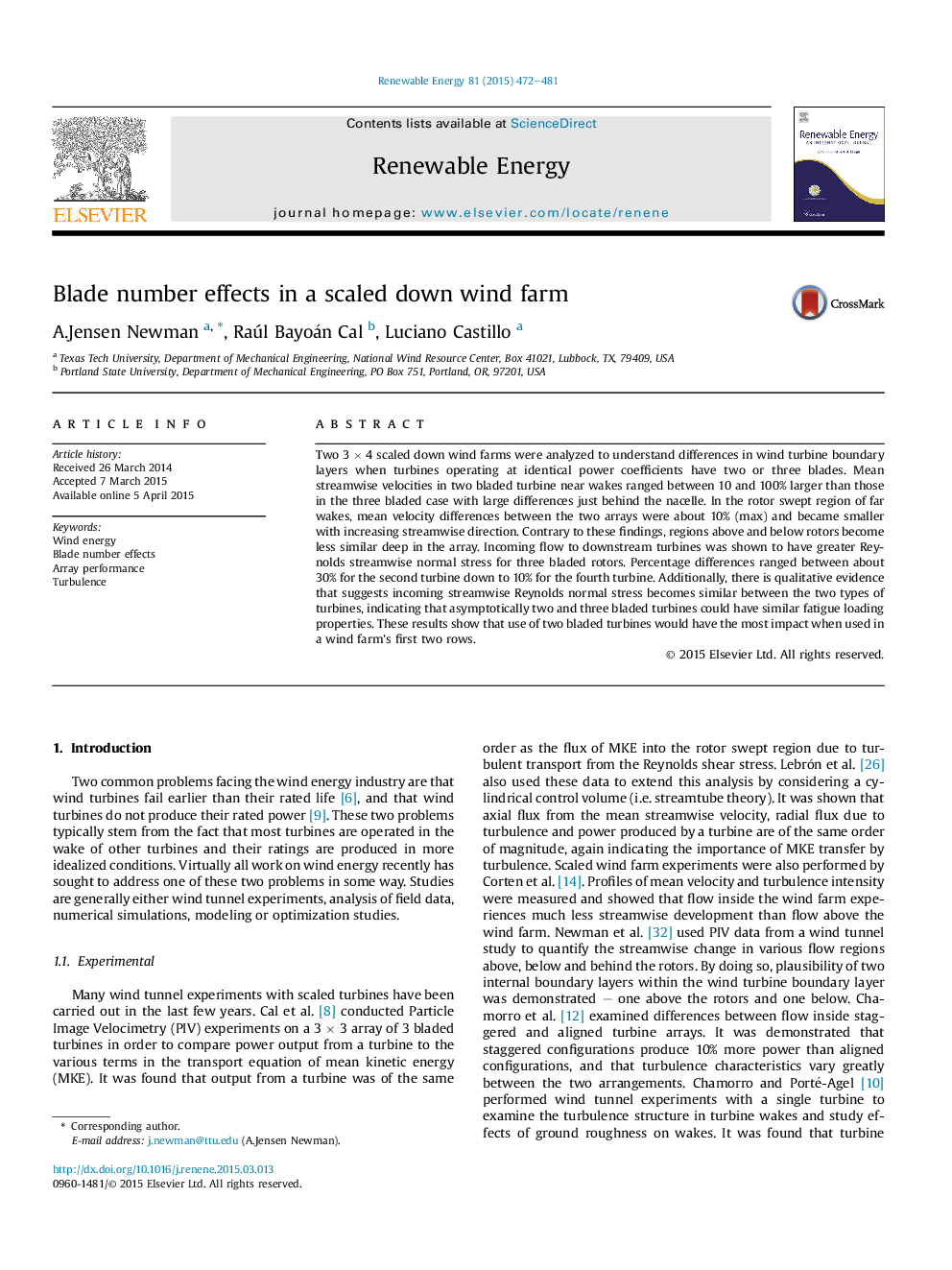| Article ID | Journal | Published Year | Pages | File Type |
|---|---|---|---|---|
| 6767125 | Renewable Energy | 2015 | 10 Pages |
Abstract
Two 3Â ÃÂ 4 scaled down wind farms were analyzed to understand differences in wind turbine boundary layers when turbines operating at identical power coefficients have two or three blades. Mean streamwise velocities in two bladed turbine near wakes ranged between 10 and 100% larger than those in the three bladed case with large differences just behind the nacelle. In the rotor swept region of far wakes, mean velocity differences between the two arrays were about 10% (max) and became smaller with increasing streamwise direction. Contrary to these findings, regions above and below rotors become less similar deep in the array. Incoming flow to downstream turbines was shown to have greater Reynolds streamwise normal stress for three bladed rotors. Percentage differences ranged between about 30% for the second turbine down to 10% for the fourth turbine. Additionally, there is qualitative evidence that suggests incoming streamwise Reynolds normal stress becomes similar between the two types of turbines, indicating that asymptotically two and three bladed turbines could have similar fatigue loading properties. These results show that use of two bladed turbines would have the most impact when used in a wind farm's first two rows.
Keywords
Related Topics
Physical Sciences and Engineering
Energy
Renewable Energy, Sustainability and the Environment
Authors
A. Jensen Newman, Raúl Bayoán Cal, Luciano Castillo,
